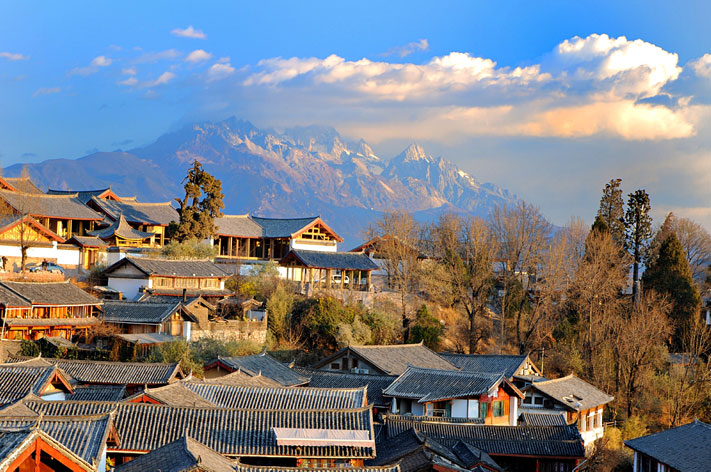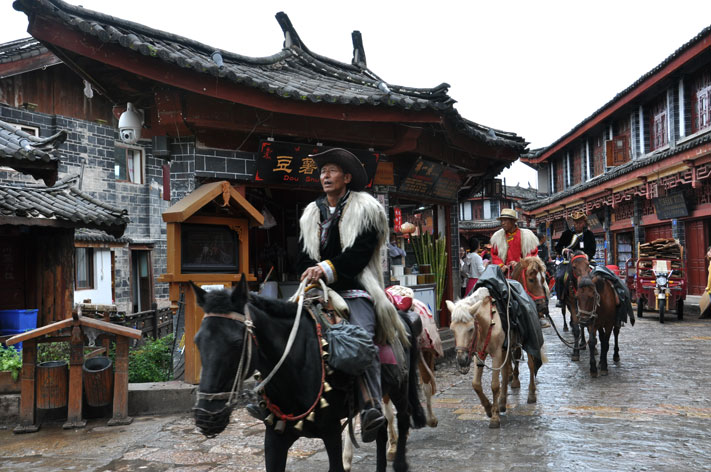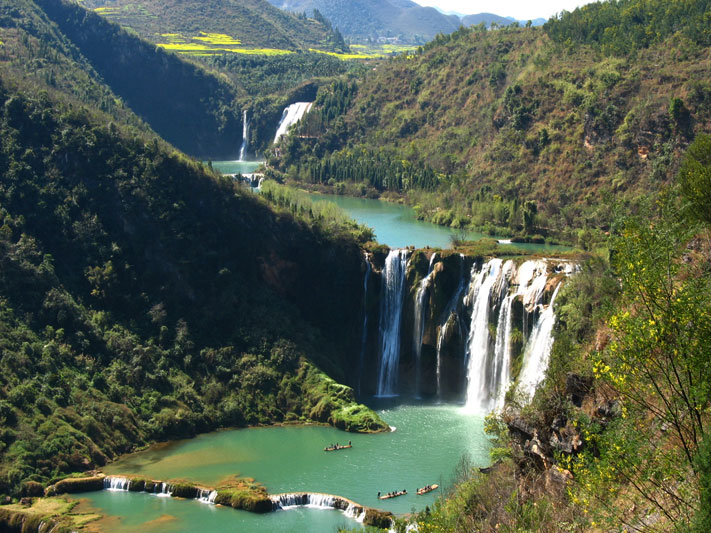General Information

Yunnan is a province of great diversity. Surrounded by Tibet, Myanmar, Laos, Vietnam, Guizhou, Guanxi and Sichuan and with almost a third of its population belonging to one of 25 different minority groups, the colorful cultural mix is fascinating and contrasting influences are seen everywhere. Below is more information about Yunnan to help you acknowledge of this diverse region.
History
Yunnan is one of the important originas of human beings. The Yuanmou Man, a Homo erectus fossil unearthed in the 1960s, has been determined to be the hominid lived 1.7 million to 2.5 million years ago. By the Neolithic period, there were human settlements in the area of Lake Dian proved by the discovered sophisticated Bronze Age cultures.
Yunnan’s earliest history is murky, and its first known contact with the rest of the country was when the warrior-prince Zhuang Qiao broke away from central China’s state of Chu and founded the pastoral Dian Kingdom near modern Kunming around 3rd century BC. In 221 BC, Qing dynasty emperor Qin Shihuang unified China and extended his authority from Sichuan to Qujing in northeast Yunnan and eastablished a first jun (prefecture). As the Qin dynasty ceded to the Han dynasty, western Yunnan was organized within prefectures and the famed Southern Silk Route into Burma and India was established which later became a wider web of trade routes. By this time, agricultural technology in Yunnan had improved markedly. The local people used bronze tools, plows and kept a variety of livestock, including cattle, horses, sheep, goats, pigs and dogs. From the Three Kingdoms period (AD 220-280) to the Western Jin period (AAD 265-316), Yunnan undergo a few changes of regime, while it gradually crept ever closer to consolidation, and came under the jurisdiction of some sort of Chinese control.
By the 7th century AD, the Bai prince named Piluoge found a powerful kingdom of Nanzhao in south of Dali. His rule rapidly expanded to include much of modern Burma, Thailand and Vietnam, though in 937 the Bai warlord Duan Siping toppled the Nanzhao and set up a smaller Dali Kingdom, which in turn survived until Kublai Khan and his Mongolian hordes descended in 1252. Twenty years later the Mongols were ruling all China as the Yuan dynasty. In 1276, Yunnan province had been created to incorporate this distant territory. However, the Mongol invasion had introduced a large Muslim population who, angered by their deteriorating status under the Chinese, staged a rebellion in 1856. In 1381, the Ming dynasty purged the Mongols and later great amount of Han Chinese immigrated into Yunnan.
Right up to the 20th century, Yunnan was exploited by European powers along the border, and the emperor. With the arrival of Japanese invasion of China in 1937, Yunnan is strategically located away from Japan’s forces in the east, the province was used to shuttle material for the Allied war machine. In May 1942, the Japanese invaded western Yunnan, two years later the invaders were driven out. In March 1950, the People’s Government of Yunnan was founded, which ushered in a brand new age in Yunnan.
Geography & Topography

Yunnan, is the southwestern province in China. With the Tropic of Cancer stretching across the south, the province has an area of 394,100 square kilometers, 4.1% of the nation's total, is the 8th largest province in China. Yunnan is an inland province, with Guizhou and Guangxi provinces in the east, Sichuan in the north, and Tibet TAR in the northwest. The province shares a border of 4,060 kilometers with Burma in the west, Laos and Vietnam in the south.
Yunnan features diverse topography. The terrain is largely mountainous that covers 84% of the province area. In the east, lies the Yunnan-Guizhou Plateau with hilly landscapes. In the south are basins. In the west is the plateau valley area over the Hengduan Mountains. A series of high mountain chains spreads across the province. The highest point in Yunnan is the Kawagebo Peak, which is about 6,740 m; and the lowest is in the Red River Valley in Hekou County, near the Vietnamese border, with an elevation of 76.4 m. In Yunnan, there are 672 rivers across the region include the grand Nujiang River (Salween) and the Langcangjiang River (Mekong), also 37 lakes could be found in the province.
Climate

Yunnan has a diverse and unique climate, owing to the low latitudes but high altitude. The climatic zones in Yunnan range from tropical to frigid.In Yunnan, there is little difference in temperature on monthly basis throughout the year, but much difference in temperature during the day. Yunnan gets plenty of rainfall which distributes unevenly in terms of season and area. In summer, some areas are often hit by floods. While, in winter and spring, drought is common. Some parts of Yunnan receive an annual rainfall of above 2000 millimeters, but some areas only get less than 900 millimeters.
Population & Minorities

Yunnan is a province for 43 million people and home for 25 and over 14 million ethnic minorities population. The main minorities are the Zhuang, Hui, Yi, Miao, Tibetan, Mongols, Yao, Bai, Hani, Dai, Lisu, Lahu, Wa, Naxi, Jingpo, Pumi, Nu, Achang, Bulang, Jinuo and Drung. These groups make up more than a third of the population, the Yi nationality has almost 5 million and accounts the largest part.
Biodiversity

Yunnan is China's most diverse province, biologically as well as culturally. Yunnan has array of fascinating scenes, from the snow-capped mountains and glaciers to tropical rain forests, from tranquil lakes to roaring rivers, from deep canyons to stunning basins. The rugged, vertical terrain produces a wide range of flora and fauna, and the province has been known as a kingdom of plants and animals. More than half of China's 30,000 high-grade species can be found in Yunnan, where is also home to over 3,000 rare animals, 31 birds, and 130 reptiles that account nearly or over half of nation’s total.
Yunnan has diverse and colorful cultures and folk customs. As the home for 25 ethnic minority groups, travelling in Yunnan will gain the great knowledge and chances to witness ethnic costumes, their traditional songs and dances, the attractive lifestyles, the villages, the fairs and the festivals that is the fantastic way to know about the land.
Main Festivals
Daogan Festival
On the 8th and 9th days of lunar February, the Lisu people living in the mountains along the Nujiang River perform tribal rites of walking on burning charcoal, climbing a ladder of sharp blades, antiphonal singing, and traditional dances.
Sanyuejie Festival
From the 15th to the 21st day of lunar March, the Bai people in Dali celebrate their traditional festival with dancing and other folk performances.
Raosanling Festival
From the 23rd to the 25th day of lunar April, the Bai people in Dali hold religious ceremonies, go picnicking, and sing and dance to traditional music.
Torch Festival
From the 24th to the 26th day of lunar June, the Yi and Bai people from Lunan, Chuxiong, and Dali place torches throughout the villages, build bonfires, paint their faces colorfully, set off fireworks, and hold bullfights.
Water Splashing Festival
In mid-April, the Dai hold dragon-boat races, water-splashing activities, singing and dancing, pouch tossing, and fireworks displays.

